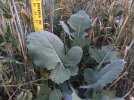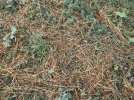SD51555
5 year old buck +
I have worms.
I place a high value on making sure I don't do anything to upset my earthworms if I don't absolutely have to (last year I had to). With all the pressure on the price and availability of products needed to make a plant grow, I thought it'd be a good idea to share a factoid article on the power of earthworms and some management considerations if you are looking to harness the power of the biological fertility cycle.
These guys can put up $200,000 per acre in non-toxic non-acidifying nutrients per year. Because of this, I make darn sure these guys stay in business.

 worldagriculturesolutions.com
worldagriculturesolutions.com
I place a high value on making sure I don't do anything to upset my earthworms if I don't absolutely have to (last year I had to). With all the pressure on the price and availability of products needed to make a plant grow, I thought it'd be a good idea to share a factoid article on the power of earthworms and some management considerations if you are looking to harness the power of the biological fertility cycle.
These guys can put up $200,000 per acre in non-toxic non-acidifying nutrients per year. Because of this, I make darn sure these guys stay in business.

EARTHWORM PRIMER
“Biological Agriculture” relies on earthworms and other soil critters to do what plows and synthetic chemicals do in conventional agronomic systems. Follow the advice below to encourag…




